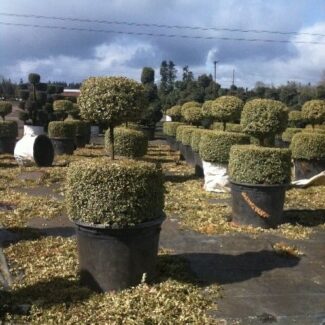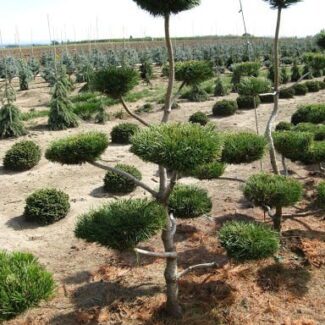Bringing a real topiary tree into your garden is going to change the way it looks for the better. This real topiary tree is a pom pom that has a lot of little bulbs on it that will stick out in all directions. You have been looking for real topiaries that will fit your whimsical style, and this real topiary tree is the only one that is going to feel like it came out of nowhere when you put it on the lawn for the first time. You have to start trying new styles on the lawn to make it look good, and the only way to take care of that is to make sure that you have made a change that you think makes the most sense to you.
You should bring in this plant when you want to have something that is on display, and it will look good with Christmas lights when it is time for that season. You can put it in the middle of the garden if you want it to be the centerpiece, or you can put it up on the patio where people can admire it every time they come over. You have a lot of choices once you get your first tree, and this tree is the one that is going to turn out to be the most fun. You will have the styling you want on the lawn, and you will have something you can be proud of that makes the house look great.
|
Water
Topiaries require daily watering in Spring, Summer, and Fall months, and a minimum of 3-4 times per week in the Winter months. Over or under-watering will result in the browning of leaves and die-back of branches. Re-pot topiaries into larger containers, using moisture control soil mixtures, in order to reduce potential damage from lack of water is recommended.
|
|
Sun
Topiaries are for outdoor use only, preferring full to partial sun, and requiring a minimum of 4-5 hours of direct sunlight each day. Pom Pon will defoliate if brought inside or planted in the shade.
|
|
Temperatures
Eugenia topiaries are recommended for Zones 9-11. Topiaries should be sheltered or covered when temperatures are expected to drop below 32 degrees Fahrenheit.
|
|
Fertilization
Fertilize at least three to four times a year with a complete formula, e.g. 13-13-13 or 18-6-8. Keep in mind that different fertilizers may be more soluble, or “hotter” than others, potentially damaging roots. Always test new fertilizers by initially applying lower rates in order to determine the plant’s tolerance to the brand of fertilizer used.
|
|
Spacing
Proper spacing should allow for sufficient light and airflow around plants. Leaves should not touch other plants or objects. Inadequate spacing may cause disease and leaf drop either due to insufficient light or due to leaves remaining too wet as a result of improper airflow around the plant.
|
|
|















